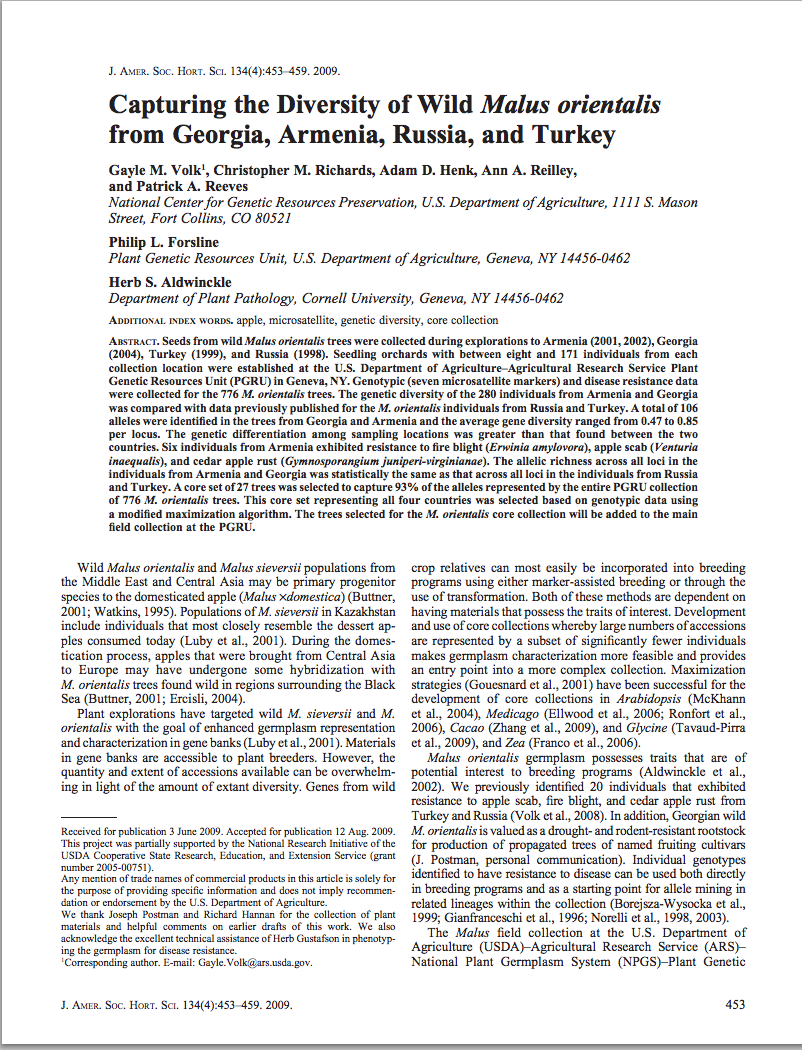Seeds from wild Malus orientalis trees were collected during explorations to Armenia (2001, 2002), Georgia (2004), Turkey (1999), and Russia (1998). Seedling orchards with between eight and 171 individuals from each collection location were established at the U.S. Department of Agriculture–Agricultural Research Service Plant Genetic Resources Unit (PGRU) in Geneva, NY. Genotypic (seven microsatellite markers) and disease resistance data were collected for the 776 M. orientalis trees. The genetic diversity of the 280 individuals from Armenia and Georgia was compared with data previously published for the M. orientalis individuals from Russia and Turkey. A total of 106 alleles were identified in the trees from Georgia and Armenia and the average gene diversity ranged from 0.47 to 0.85 per locus. The genetic differentiation among sampling locations was greater than that found between the two countries. Six individuals from Armenia exhibited resistance to fire blight (Erwinia amylovora), apple scab (Venturia inaequalis), and cedar apple rust (Gymnosporangium juniperi-virginianae). The allelic richness across all loci in the individuals from Armenia and Georgia was statistically the same as that across all loci in the individuals from Russia and Turkey. A core set of 27 trees was selected to capture 93% of the alleles represented by the entire PGRU collection of 776 M. orientalis trees. This core set representing all four countries was selected based on genotypic data using a modified maximization algorithm. The trees selected for the M. orientalis core collection will be added to the main field collection at the PGRU.
: Volk, G.M., et al.
: Journal of the American Society for Horticultural Science
Publication Years: 2009
Genetic diversity
